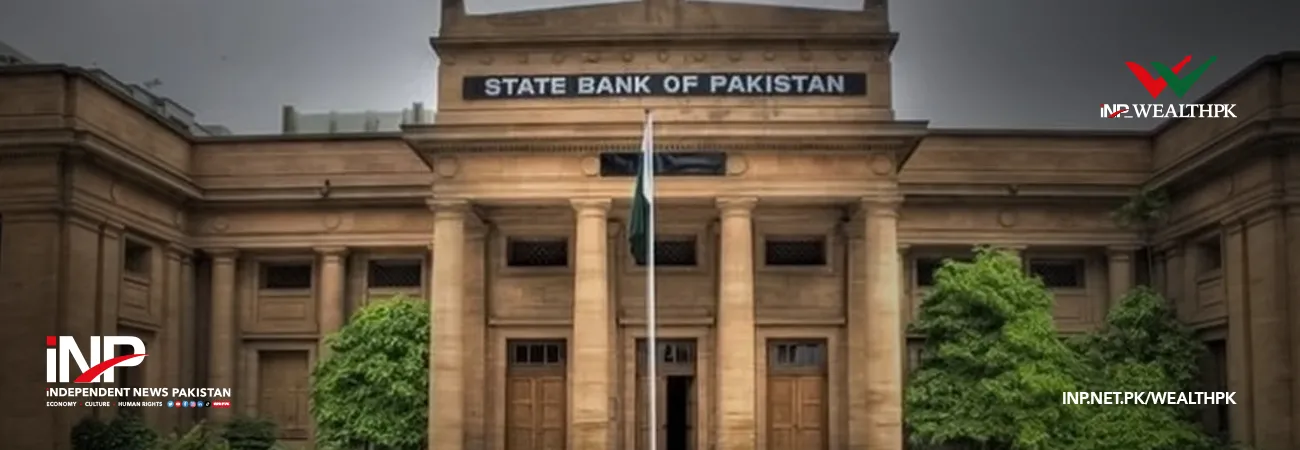INP-WealthPk
Ayesha Saba
The State Bank of Pakistan (SBP) has urged continued fiscal discipline, coordinated economic policies, and deep structural reforms to ensure that the country’s recent stabilization gains translate into sustainable and inclusive growth.
In its Monetary Policy Statement issued Monday, the central bank’s Monetary Policy Committee (MPC) emphasized that strengthening external and fiscal buffers is critical to maintaining macroeconomic stability amid global uncertainty. “Sustainable recovery requires coordinated efforts between monetary and fiscal authorities,” it said.
The MPC maintained that Pakistan’s macroeconomic outlook has improved since the last policy review, supported by stronger industrial output, resilient remittances, and the IMF staff-level agreement under the Extended Fund Facility (EFF) and the Resilience and Sustainability Facility (RSF). However, it cautioned that the economy remains vulnerable to external shocks, volatile commodity prices, and structural weaknesses in productivity and public finance.
“The continuation of prudent policies and timely reforms is essential to preserve stability and sustain the ongoing economic recovery,” the statement noted.
The central bank said Pakistan has made progress in building foreign-exchange reserves, controlling fiscal imbalances, and anchoring inflation expectations. The policy rate is kept unchanged at 11 percent to consolidate these gains and ensure that earlier easing measures continue to transmit effectively through the financial system.
The SBP reiterated that fiscal consolidation must remain a priority, particularly through improved revenue mobilization and efficient expenditure management. The MPC highlighted that both the overall and primary fiscal balances are likely to post surpluses in Q1-FY26, reflecting the government’s commitment to maintaining budgetary discipline.
The MPC also called for accelerating structural reforms aimed at enhancing productivity, diversifying exports, and modernizing the financial system. “Such measures are essential to achieve long-term growth without re-emerging imbalances,” it added.
According to the SBP, improvements in agriculture and industry are expected to support a broader pickup in services, with GDP growth projected in the upper half of the 3.25–4.25 percent range for FY 2026. Yet, sustaining this pace requires addressing persistent challenges such as low investment, high informality, and limited value addition in exports.
The SBP emphasized that continued fiscal prudence would help reduce the public debt burden and strengthen investor confidence. It noted that the primary surplus achieved during the first quarter must be preserved throughout the year to ensure compliance with IMF program targets.
The central bank also pointed out that external stability hinges on maintaining a manageable current account deficit and steady inflows. With reserves at $14.5 billion as of mid-October and projected to rise to $17.8 billion by June 2026, the SBP said prudent external management remains key to sustaining confidence in the rupee.
The MPC highlighted that stable inflation expectations and improving growth prospects present an opportunity to consolidate reforms rather than reverse them. It urged policymakers to maintain the reform momentum in taxation, energy pricing, and state-owned enterprises to reduce fiscal vulnerabilities.
“The current macroeconomic stability provides a valuable window for implementing long-overdue structural changes,” the central bank said.
The SBP reaffirmed its commitment to fostering a stable monetary environment while supporting reforms that expand productive capacity. “Monetary policy will remain focused on price stability a prerequisite for sustainable growth while fiscal and structural measures must deliver efficiency and competitiveness,” it concluded.

Credit: INP-WealthPk












